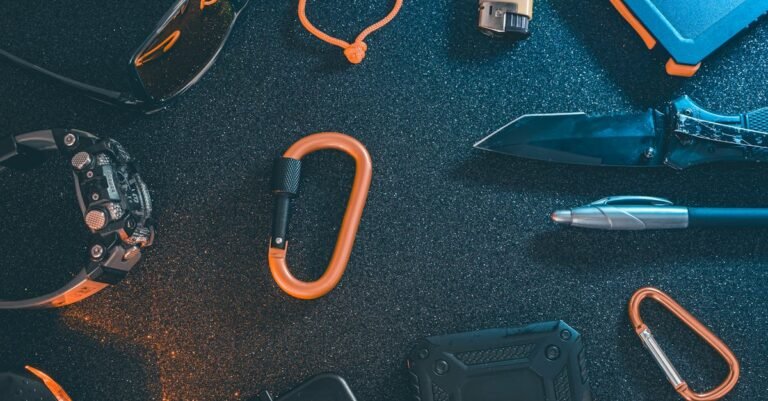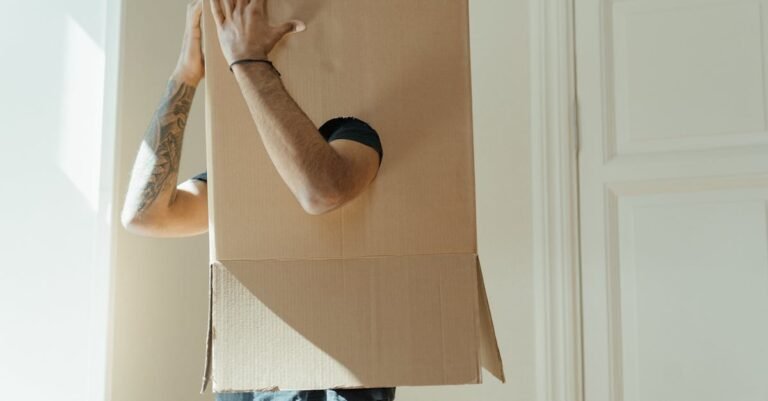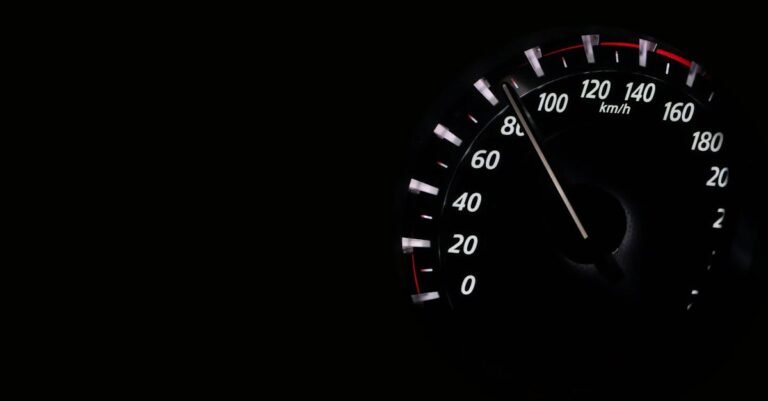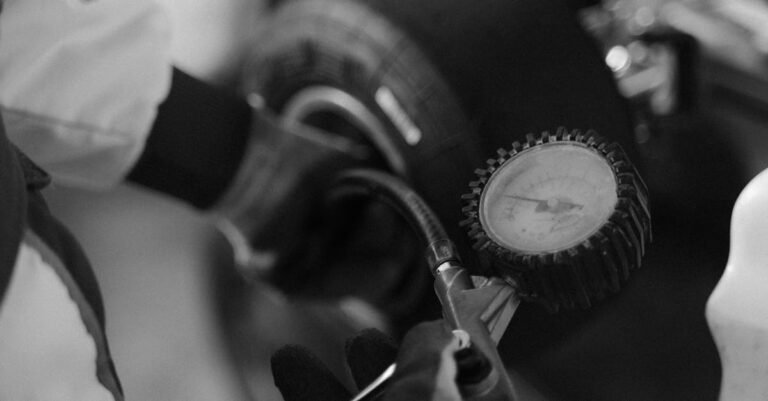Table of Contents
- Handling A Car Breakdown Safely: Your Ultimate Guide
- Oh No! That Sputtering Sound – What Now?
- Priority One: Getting Off the Road Safely
- Making Yourself Visible: Don’t Be a Sitting Duck
- Inside or Outside? The Safety Dilemma
- Calling for Backup: Getting the Help You Need
- Basic Troubleshooting (If It’s Safe)
- Things You Absolutely Should NOT Do
- Preparing for the Unexpected: The Breakdown Kit
- Conclusion: Turning a Breakdown into a Blip
- Frequently Asked Questions (FAQs)
Handling A Car Breakdown Safely: Your Ultimate Guide
Picture this: you’re cruising down the road, music playing, maybe thinking about dinner or that meeting you just aced. Suddenly, sputter, cough, clunk. Your trusty steed, your four wheeled friend, decides it’s had enough. Silence. Or worse, worrying noises. Your stomach drops. A car breakdown. It happens to the best of us, often at the most inconvenient times. But panicking? That’s the last thing you should do. Knowing how to handle a car breakdown safely can turn a potential nightmare into a manageable inconvenience. Let’s walk through exactly what you need to do, step by step, to keep yourself and others safe.
Oh No! That Sputtering Sound – What Now?
That moment your car starts acting up is critical. Your immediate reactions set the stage for everything that follows. It’s not just about the mechanical failure; it’s about managing the situation safely from the very first sign of trouble.
Recognizing the Signs of Trouble
Breakdowns rarely happen completely out of the blue. Your car often gives subtle (or not so subtle) hints that something’s wrong. Are you paying attention? Look out for:
- Warning Lights: That check engine light isn’t just dashboard decoration! Lights for oil pressure, engine temperature, or battery issues are serious warnings. Don’t ignore them.
- Strange Noises: Sputtering, grinding, knocking, whining, or sudden loud bangs are all red flags. Turn down the radio and listen to your car.
- Weird Smells: Burning rubber, hot oil, gasoline fumes (inside the cabin), or a sweet smell (coolant) often signal an impending issue.
- Handling Problems: Difficulty steering, pulling to one side, poor braking performance, or a sudden loss of power are clear indicators something is amiss.
- Smoke or Steam: Any smoke or steam coming from under the hood or the exhaust (beyond normal cold weather condensation) needs immediate attention.
Recognizing these signs early gives you precious time to react safely before the car stops completely, potentially in a dangerous spot.
Staying Calm Under Pressure
Okay, so your car is definitely not happy. Your first instinct might be panic. Your heart races, your mind jumps to worst case scenarios. Breathe. Seriously, take a deep breath. Panicking clouds judgment, and clear judgment is your most valuable tool right now. Remind yourself that cars break down, it’s a solvable problem, and your priority is safety. Freaking out won’t fix the flat tire or the overheating engine. Staying calm allows you to think clearly, assess the situation logically, and make safe decisions about pulling over and getting help.
Priority One: Getting Off the Road Safely
Once you realize there’s a problem, your absolute top priority is to get your vehicle out of the flow of traffic. A stationary car in a travel lane is incredibly dangerous. Every second counts.
Choosing the Right Spot to Pull Over
Don’t just slam on the brakes wherever you are. Scan your surroundings quickly. Ideally, you want to aim for:
- The Right Shoulder or Breakdown Lane: This is the safest place, away from moving traffic. Pull over as far to the right as possible.
- An Exit Ramp: If you’re close to an exit, try to coast onto it. Getting off the main highway significantly reduces risk.
- A Well Lit Area (at night): If possible, aim for an area with streetlights. Visibility is key for safety.
- A Straight Stretch of Road: Avoid stopping just after a blind curve or over the crest of a hill where oncoming traffic won’t see you in time.
- Solid Ground: Try to get fully onto the shoulder, avoiding soft grass or mud where your car could get stuck or unstable.
Highway vs. Local Road Considerations
Where you break down matters. On a high speed highway, the shoulder is your primary goal. Traffic is moving much faster, making stopping in a lane exceptionally hazardous. Pull as far right as you can, giving yourself a buffer from traffic. On slower local roads, you might have more options like side streets, parking lots, or driveways. However, even on slower roads, getting completely out of the travel lane is crucial. Don’t assume slower traffic makes it safe to linger.
Executing the Pull-Over Maneuver
Signal your intentions clearly! Even if your car is acting erratically, use your turn signal to indicate you’re moving to the shoulder. Check your mirrors and blind spot carefully – other drivers might not realize you’re having trouble. Reduce your speed gradually, avoiding sudden braking unless absolutely necessary. If you lose power steering or power brakes, be prepared to exert more physical effort. Once you’ve stopped, engage your parking brake firmly, especially if you’re on any kind of incline.
Making Yourself Visible: Don’t Be a Sitting Duck
You’re off the road. Good. Now, you need to make sure everyone else *sees* you. A stationary vehicle, especially at night or in poor weather, can be surprisingly hard to spot until it’s too late.
Engaging Hazard Lights Immediately
This should be almost automatic. As soon as you start pulling over, or immediately after stopping, hit that hazard light button (the one with the red triangle symbol). These flashing lights are a universal signal for distress or a hazard, alerting other drivers to approach with caution and give you space. Leave them on the entire time you are stopped.
Using Warning Triangles and Flares
Hazard lights are good, but they aren’t always enough, especially on highways or around curves. Reflective warning triangles or flares significantly increase your visibility. If you have them (and you really should!), and it’s safe to exit the vehicle (more on that next), deploy them.
Proper Placement for Maximum Visibility
Don’t just toss them behind the car. Proper placement is key. The goal is to warn drivers well before they reach your vehicle.
- Behind the Vehicle: Place one triangle or flare about 10 feet behind your car to warn drivers immediately next to you. Place a second one further back – maybe 100 feet (about 40 paces) on a regular road, and up to 300 feet (120 paces) on a highway or around a curve/hill. This gives drivers ample time to react.
- In Front (if applicable): If you’re stopped near a curve where traffic might come around, consider placing one ahead of your vehicle as well.
- Safety First: When placing these devices, walk along the shoulder facing oncoming traffic so you can see cars approaching. Be extremely cautious. If traffic is too heavy or fast, or the shoulder is too narrow, it might be safer to skip this step and rely on hazard lights while staying inside.
Inside or Outside? The Safety Dilemma
Okay, you’re visible. Now comes a crucial decision: should you stay in the car or get out? There’s no single right answer; it depends entirely on your specific situation.
Assessing Your Location’s Risk
Take a moment to evaluate your surroundings critically:
- Highway Shoulder: High speed traffic whizzing by just feet away? Generally, staying inside the vehicle, buckled up, is safer. Your car offers some protection if another vehicle drifts onto the shoulder.
- Narrow Shoulder/No Shoulder: If you couldn’t get completely off the road, or the shoulder is tiny, staying inside might put you directly in harm’s way.
- Blind Curve/Hill Crest: If you’re stopped where visibility is poor for oncoming traffic, the risk of being hit is higher.
- Risk of Fire/Fumes: If you see smoke coming from the engine, smell strong gasoline fumes inside the car, or suspect a fire risk, get everyone out immediately.
- Personal Safety Concerns: Is the area deserted? Does it feel unsafe for other reasons?
When Staying Inside is Safer
Often, particularly on busy highways or freeways, the safest place is inside your car with your seatbelt fastened. Keep the doors locked. This protects you from the elements and, more importantly, from being struck by a passing vehicle if you were standing outside. Stay alert and watch the traffic.
When Exiting the Vehicle is Necessary
If staying inside poses a greater risk (like potential fire, being too close to traffic on a narrow shoulder, or stopping in a dangerous spot like a blind curve), you need to get out. But do it safely:
- Exit on the side AWAY from traffic: Use the doors facing the shoulder or ditch, never the ones facing the travel lanes. Have passengers do the same.
- Move far away: Don’t just stand next to the car. Get well off the shoulder, behind a guardrail if possible, or up an embankment. Put distance between yourself and moving traffic.
- Keep everyone together: Especially important if you have children or pets.
- Be Visible: If you have a reflective vest, put it on.
Calling for Backup: Getting the Help You Need
You’re in a safe(r) position, visible, and have decided whether to stay in or get out. Now it’s time to call for help. Don’t wait.
Who to Call First? (Roadside Assistance, Emergency Services)
Your first call should usually be to your roadside assistance provider (like AAA, your insurance company’s service, or a manufacturer’s program). Have their number saved in your phone or written down in your glove box. They can dispatch a tow truck or mechanic.
However, call emergency services (like 911 or the local equivalent) immediately if:
- Anyone is injured.
- Your vehicle is in a dangerous position obstructing traffic and cannot be moved.
- You feel unsafe due to your location or suspicious individuals.
- There’s a fire or significant fluid leak posing an environmental hazard.
It’s better to call emergency services and let them assess the situation if you’re unsure about the immediate danger.
Providing Clear and Accurate Information
Whether calling roadside assistance or emergency services, be prepared to provide concise and accurate details:
- Your Precise Location: This is critical. Use mile markers, exit numbers, cross streets, landmarks, or GPS coordinates from your phone. Describe which side of the road you’re on and the direction you were travelling.
- Your Vehicle Details: Make, model, color, and license plate number.
- The Nature of the Problem: Briefly explain what happened (e.g., “flat tire,” “engine died,” “overheating,” “won’t start”).
- Your Phone Number: So they can call you back if needed.
- Your Membership Number (for roadside assistance).
- Number of Passengers: Especially important if you need alternative transport.
- Safety Status: Let them know if the vehicle is in a hazardous spot or if everyone is safe and away from traffic.
Clear information gets help to you faster.
Basic Troubleshooting (If It’s Safe)
While waiting for help, if – and only if – you are in a completely safe location and know what you’re doing, you might consider some very basic checks. Never attempt repairs in a dangerous spot.
Simple Checks You Might Perform
Again, safety first! Only do these if you’re well off the road and comfortable doing so:
- Flat Tire: Visually confirm if a tire is flat. If you have a spare and know how to change it *safely*, this might be an option, but roadside assistance is often safer and easier.
- Ran Out of Gas: Check your fuel gauge. It sounds obvious, but it happens!
- Loose Battery Cable: Sometimes a connection can wiggle loose. A quick visual check (don’t touch if you’re unsure!) might reveal this.
- Check Fluids (After Cooling): Never open a hot radiator cap. If the engine has cooled significantly, you might check oil or coolant levels if you suspect that’s the issue, but be cautious.
Knowing Your Limits: Don’t Make it Worse
This is crucial. Unless you are a trained mechanic, resist the urge to start tinkering extensively under the hood. You could easily make the problem worse, injure yourself, or void a warranty. Modern cars are complex. If it’s not something simple and obvious like a flat tire or empty gas tank, it’s usually best to wait for the professionals. Don’t try heroic roadside repairs, especially on a busy road.
Things You Absolutely Should NOT Do
Sometimes, knowing what not to do is just as important:
- DON’T Panic: We covered this, but it bears repeating.
- DON’T Stop in a Travel Lane: Get to the shoulder or off the road if at all possible.
- DON’T Stand Behind or Directly in Front of Your Car: Especially on a highway shoulder. Stay far off to the side.
- DON’T Neglect Hazard Lights/Warning Devices: Make yourself visible.
- DON’T Accept Rides from Strangers: Wait for official roadside assistance or police.
- DON’T Attempt Complex Repairs in Unsafe Conditions: Prioritize your safety over fixing the car quickly.
- DON’T Leave Your Car Unattended (if avoidable): Unless instructed by police or if your safety is at risk. Try to wait for the tow truck.
- DON’T Forget to Turn Your Wheels: If stopped on a shoulder, turn your front wheels away from the road (towards the curb/ditch). If your car gets hit from behind, this might direct it off the road rather than back into traffic.
Preparing for the Unexpected: The Breakdown Kit
Being prepared can make a massive difference. Keep an emergency breakdown kit in your trunk. What should be in it?
- Reflective Warning Triangles/Flares: Essential for visibility.
- Jumper Cables: For dead batteries.
- Basic Toolkit: Pliers, screwdrivers, adjustable wrench.
- Flashlight (and extra batteries): Crucial for night breakdowns.
- First Aid Kit: For minor injuries.
- Reflective Vest: Increases your visibility if you must exit the car.
- Gloves: Work gloves for protection.
- Tire Pressure Gauge & Portable Inflator: Can sometimes temporarily fix a slow leak.
- Duct Tape: Surprisingly useful for temporary fixes.
- Tow Rope (use with caution): Only for very specific, safe situations.
- Phone Charger/Power Bank: A dead phone is useless.
- Water and Non Perishable Snacks: Waiting can take time.
- Blanket: For warmth, especially in winter.
- List of Emergency Contacts & Roadside Assistance Number.
Think of it like insurance – you hope you never need it, but you’ll be incredibly glad you have it if you do.
Conclusion: Turning a Breakdown into a Blip
A car breakdown is never fun, let’s be honest. It’s disruptive, potentially scary, and often expensive. But it doesn’t have to be a disaster. By staying calm, prioritizing safety above all else, making yourself visible, getting off the road effectively, and knowing who to call, you can manage the situation with confidence. Remember the key steps: recognize the signs, pull over safely, increase visibility, assess your risk to decide whether to stay inside or exit, call for help promptly, and avoid making things worse with risky roadside repairs. Preparation with an emergency kit is your secret weapon. Handle it right, and that breakdown becomes just a story you tell later, not a traumatic event.
Frequently Asked Questions (FAQs)
1. What’s the absolute first thing I should do if my car breaks down on the highway?
Immediately turn on your hazard lights to alert other drivers, then focus on safely maneuvering your vehicle as far onto the right shoulder as possible, completely out of the travel lanes. Your immediate priority is getting out of the path of high speed traffic.
2. Is it safer to stay in my car or get out after pulling over?
It depends heavily on your location. On a busy highway with fast traffic, staying inside your car (with seatbelt on) is generally safer as the car offers protection. However, if you’re on a very narrow shoulder, near a blind curve, or suspect a fire risk, carefully exit the vehicle on the side away from traffic and move to a safer location far from the road (like behind a guardrail).
3. Who should I call first – roadside assistance or 911?
Call your roadside assistance provider first for typical breakdowns (flat tire, dead battery, engine trouble). Call 911 (or the local emergency number) immediately if there are injuries, if your car is creating an immediate traffic hazard you can’t resolve, if there’s a fire, or if you feel unsafe in your location.
4. How far back should I place warning triangles or flares?
Place one about 10 feet behind your vehicle, and another much further back to give drivers ample warning – around 100 feet (40 paces) on slower roads, and up to 300 feet (120 paces) or more on high speed highways or before curves/hills. Always prioritize your safety when placing them.
5. My phone is dead or has no signal. What should I do?
This highlights the importance of a power bank in your emergency kit. If your phone is unusable, stay put (if safe) and wait for a police patrol or hope another motorist calls for help. If you have passengers, one might try walking to the nearest emergency call box (if available on the highway) or a safer area with potential signal, but this carries risks. You can also try to signal passing motorists by raising your hood or tying a white cloth to the antenna/door handle, but remain cautious about accepting help from strangers.









